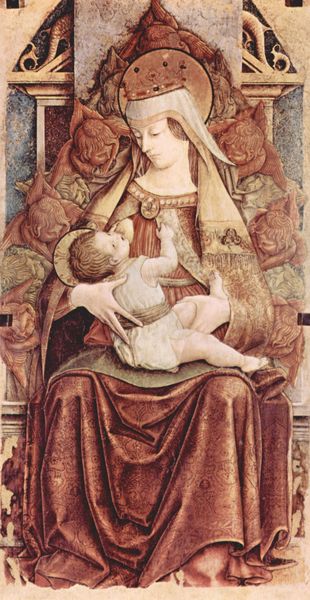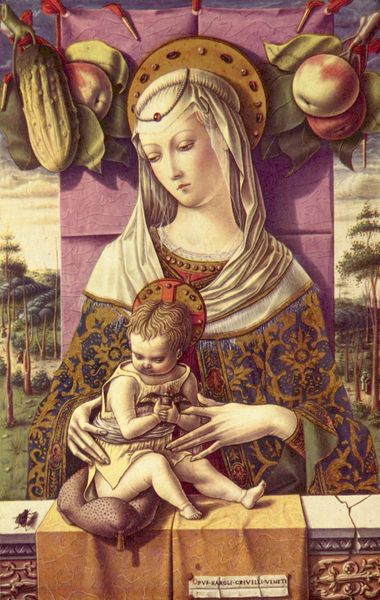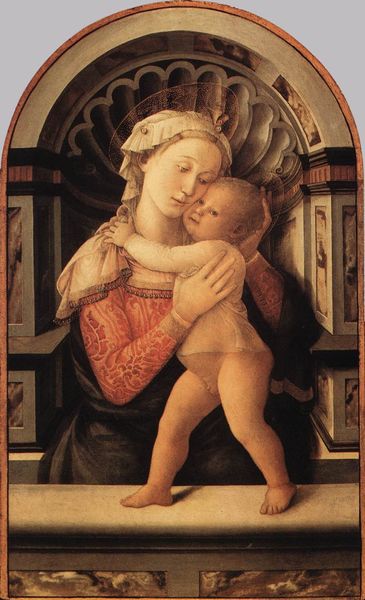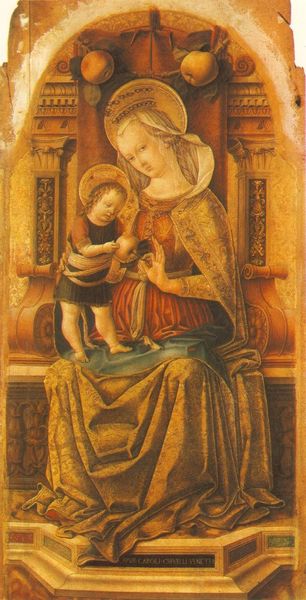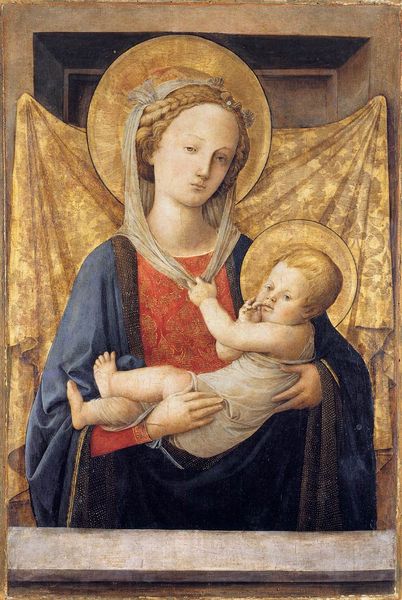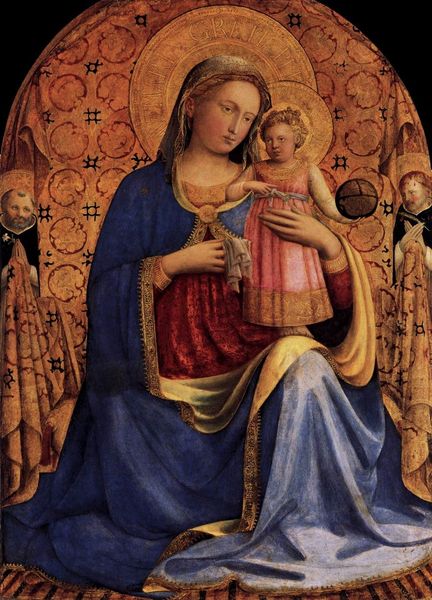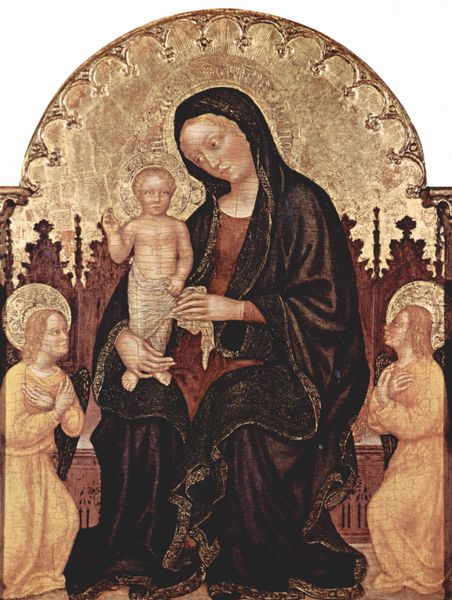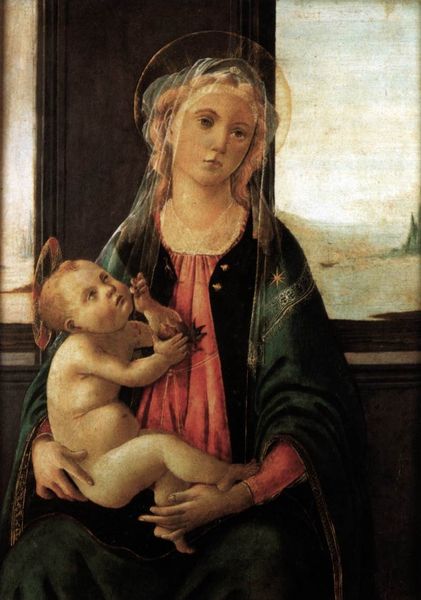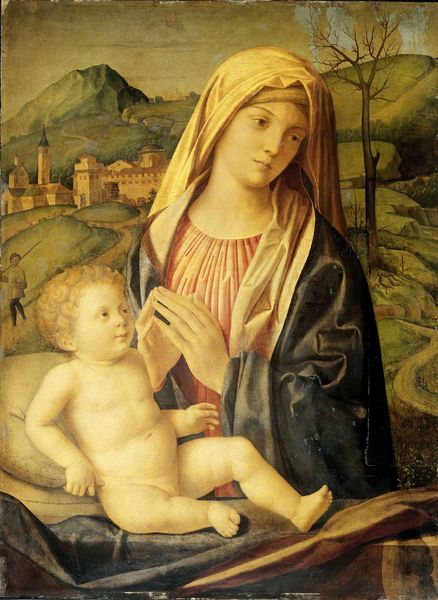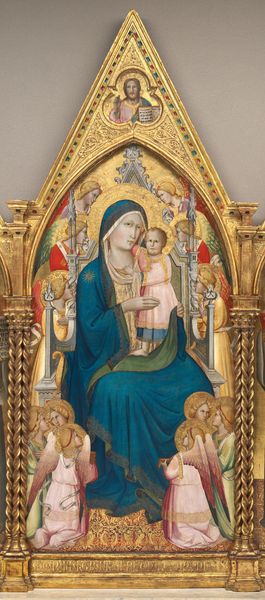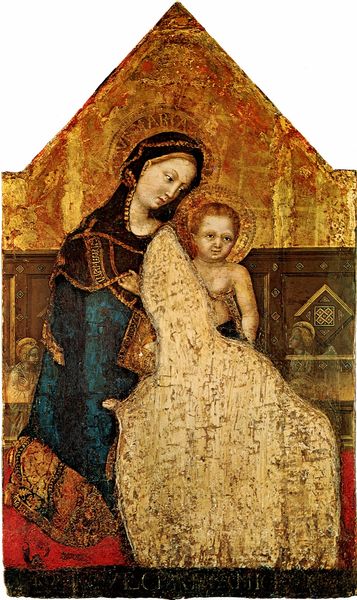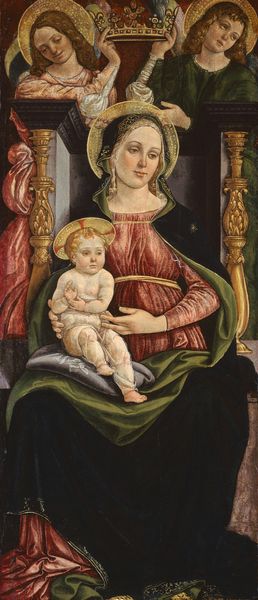
painting, oil-paint
#
portrait
#
high-renaissance
#
painting
#
oil-paint
#
sculpture
#
oil painting
#
child
#
christianity
#
italian-renaissance
#
mixed media
#
miniature
#
christ
Dimensions: 136 x 66 cm
Copyright: Public domain
Curator: I’m struck by the slightly melancholic aura surrounding Carlo Crivelli's "Enthroned Madonna," painted in 1473. It's arresting. Editor: Absolutely. Crivelli paints Madonna with a distinct gravity, so different from some of her more idealized portrayals. Look how the weight of motherhood and destiny seems to press down on her. It's quite the contrast to the abundant fruit decorating the space above. What do you make of the fruit? Curator: Those suspended fruits, along with other elements, operate on a symbolic level that merges earthly abundance with the divine promise. It is not an innovation exclusive to Crivelli: Northern Italian Renaissance painters use these visual devices to suggest not only luxury and affluence but the salvational role of mother and child. Note too that Baby Christ grasps a skull; a clear and unsettling signifier of His fate. It's the constant presence of the future burden he's expected to carry for humankind that she seems somber. Editor: That juxtaposition is really thought-provoking. A signifier of redemption but also such explicit, impending sorrow, visualized by the skull. It brings forward complex narratives surrounding female figures and assigned grief. How relevant it remains when considering motherhood in patriarchal structures even today. Crivelli positions her both as a mother but also as a conduit in the salvation narrative; two roles with specific requirements and imposed standards. Curator: I see the composition less as a depiction of grief or pain and more as a powerful symbol of sacrifice, acceptance, and dedication that aligns her to the image of the Mater Dolorosa. Even the meticulous detail in her garment isn’t just decorative—the texture and weight suggest both her regal status, as Queen of Heaven, and a profound humbleness. Editor: And even as he renders the textures, it’s still worth interrogating who has the ability to depict these iconographies, because it's largely men who frame and disseminate these messages around virtue, piety, and womanhood. The Madonna becomes not a person but a cipher. Curator: Certainly the lens matters; the image is invariably shaped by a patriarchal lineage. Yet, I also feel a resonance that surpasses solely a one-dimensional representation; for some viewers it might still deliver comfort or speak to something larger than earthly existence. It's how symbolism still operates powerfully to unite and instill hope. Editor: I appreciate how you pull out the ways symbols carry an enduring cultural meaning, in that way superseding individual agency. Still, looking closely and situating within a cultural framework, as with "Enthroned Madonna," brings fresh questions. Curator: Agreed. There’s so much in a close consideration of Crivelli's painting beyond immediate devotional appreciation. Editor: Absolutely. Art history opens to fresh questions about who holds and shapes narratives.
Comments
No comments
Be the first to comment and join the conversation on the ultimate creative platform.
